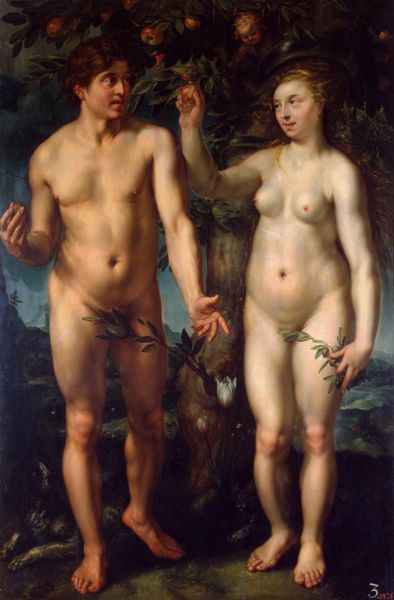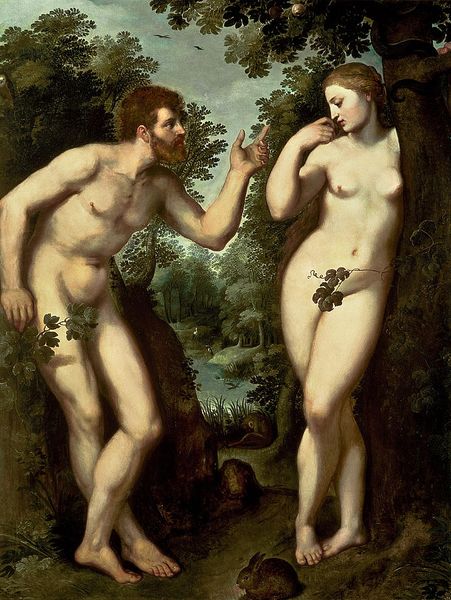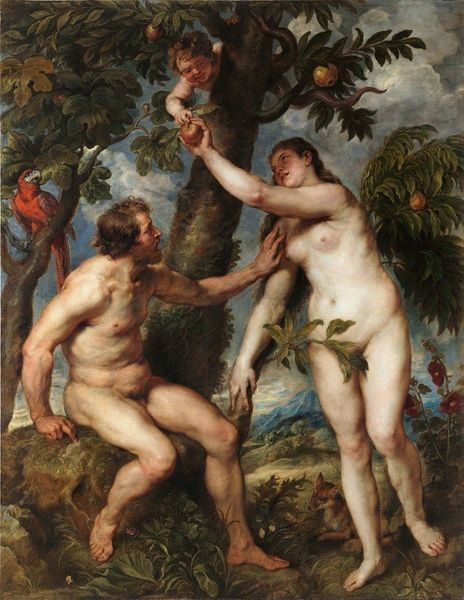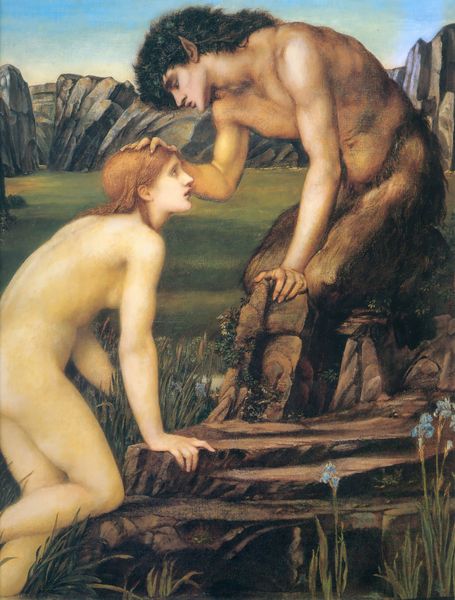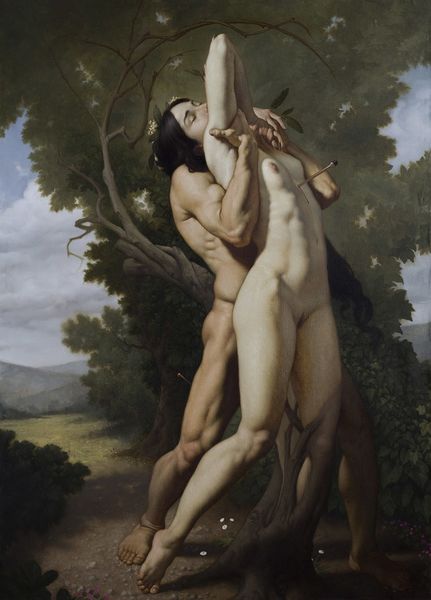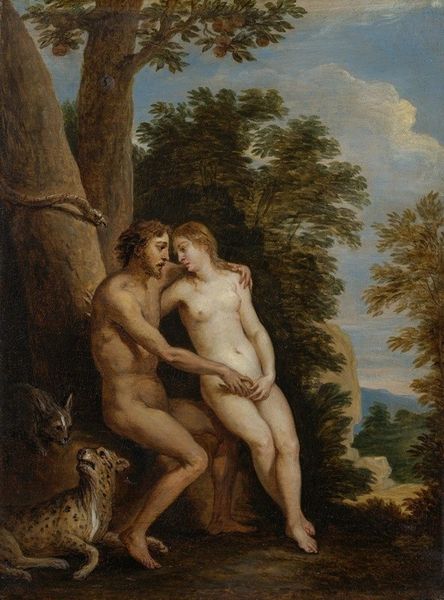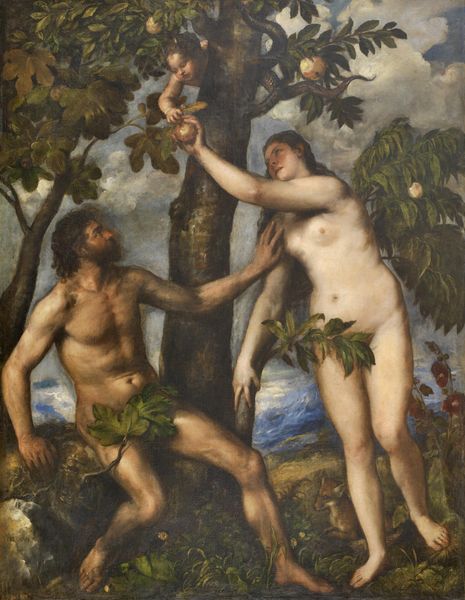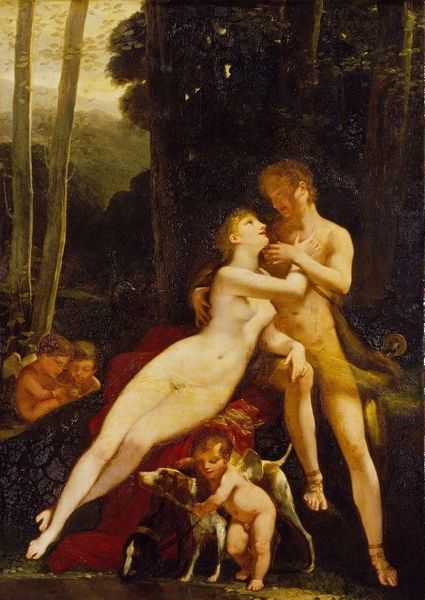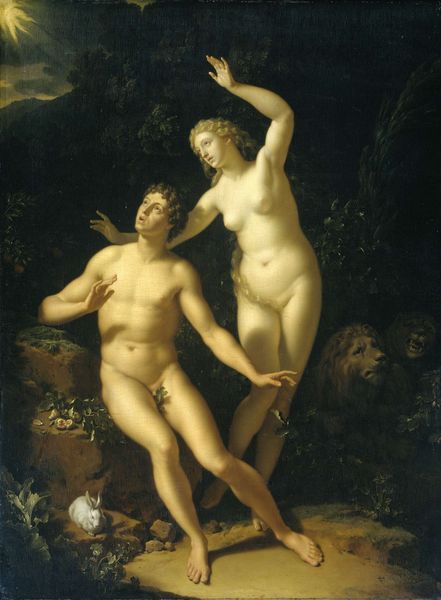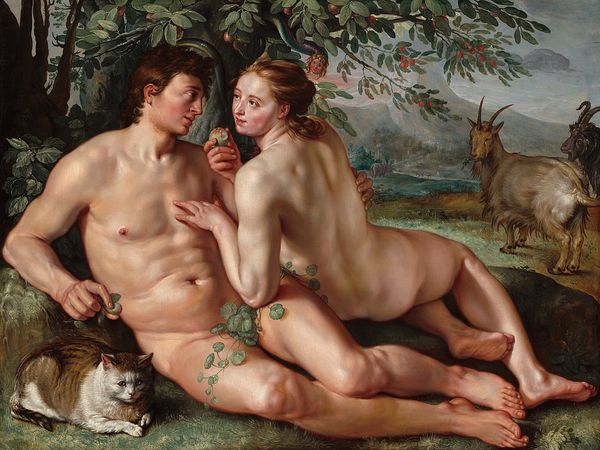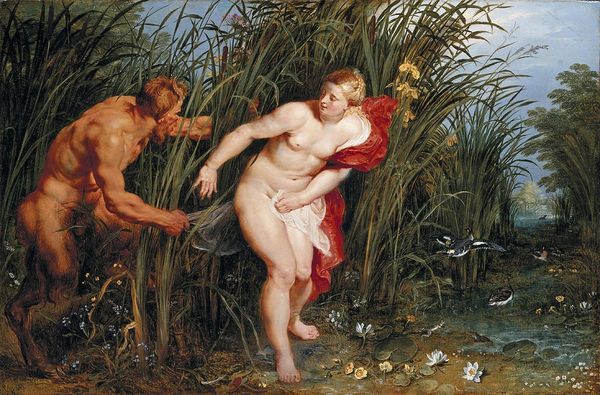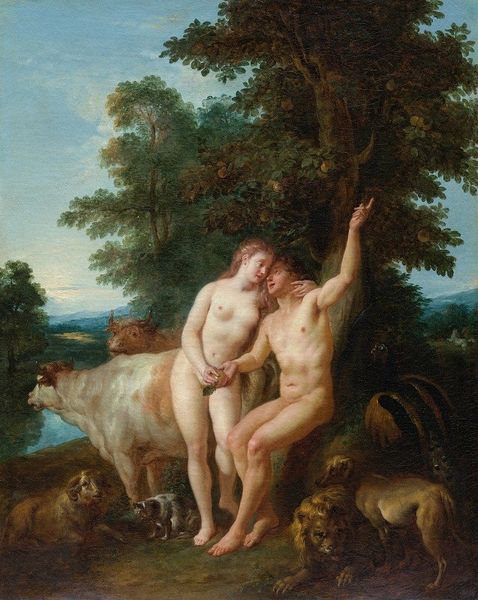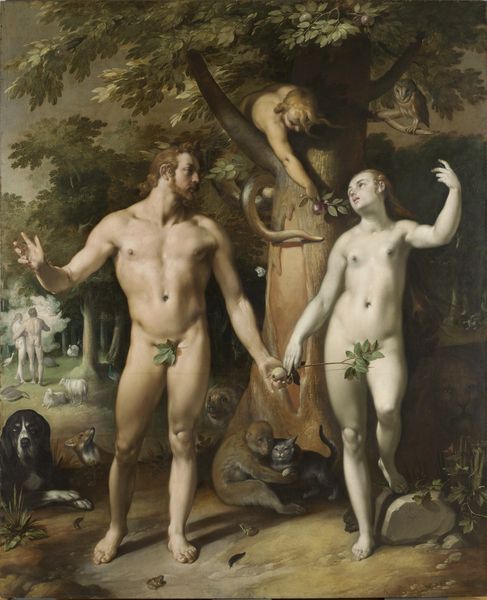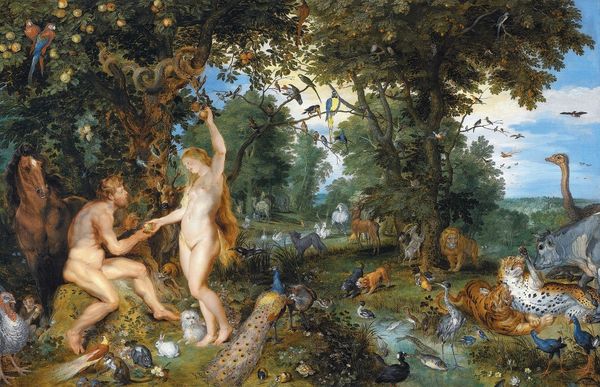
painting, oil-paint
#
allegory
#
painting
#
oil-paint
#
landscape
#
figuration
#
oil painting
#
romanticism
#
genre-painting
#
history-painting
#
nude
Copyright: Public Domain: Artvee
Curator: Immediately striking is the luminous rendering of flesh against the muted greens of the garden. It possesses a dramatic flair despite depicting an intimate exchange. Editor: This painting, "Eve Tempts Adam," created by Wilhelm Marstrand between 1825 and 1873, invites a look into the social constructs underpinning the iconic biblical narrative. Curator: Look at the composition! The layering of oil paint creates a soft, almost dreamlike quality. The textural contrast between the smooth skin of Adam and Eve and the rough bark of the tree is quite masterful. And how deliberate the staging is to tell its story! Editor: Exactly. Marstrand paints Eve as an active agent, disrupting the narrative that often casts her solely as a seductress. We should ask, what power dynamics are at play? How are gender roles being shaped, challenged, or reinforced through Marstrand's choices here? He implicates a societal narrative by way of using those classical allegorical tropes. Curator: We must also think about the historical context. Consider the pigment trade. Did Marstrand use lead white, a common pigment at the time? The act of creating this work speaks volumes about his choices of material, a reflection on production that may inform a dialogue regarding class, and economy of its time. Editor: Absolutely, examining the power relations. The Romantic style, although pretty on the surface, can often conceal deeper ideologies. What is he saying about knowledge, disobedience, and the fall from grace? What responsibility did these gender stereotypes in society reinforce during his life and beyond? Curator: Ultimately, this piece provides rich insight into the social values that conditioned the piece itself as it attempts to speak through time. Editor: It pushes us to reflect critically on enduring questions of gender, power, and narrative control. I'm really taken back on how applicable the sentiments within this frame, are for ours.
Comments
No comments
Be the first to comment and join the conversation on the ultimate creative platform.
